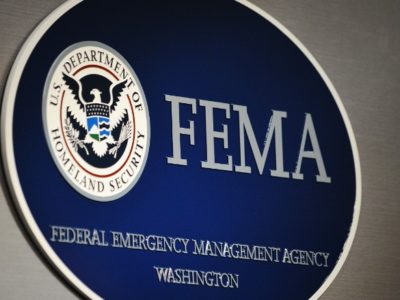The Forthcoming Interpretation Wars
The new NEPA amendments weren’t intended to speed up the process. But they’ll also spark new litigation.
The Interior Department has a rule that environmental review isn’t required for a prescribed fire of 4,500 acres, subject to restrictions that aren’t relevant here. Prior law authorized this kind of regulation but also required the agency to consider whether a particular fire involved exceptional circumstances, such as being next to a wilderness area. After the 2023 NEPA amendments, does the agency have to do some kind of environmental review before setting a fire next to a wilderness area?
There are arguments both ways, and courts will eventually have to resolve them. That means more litigation.
There’s nothing unique about this legal issue. The debt ceiling law adds extensive new language about environmental impact statements. It’s going to take time to sort out the consequences, which means more litigation. Ironically, even though the changes were intended to speed up the process, legal uncertainty may actually slow things down.
By way of background, NEPA requires environmental impact statements. The regulations interpreting NEPA have long give federal agencies the power to designate categories of actions that don’t require assessment of environmental impacts — those are the “categorical exclusions.” The basic idea is that some types of activities are either too minor or too remote from environmental concerns to be worth evaluating on a case-by-case basis. Under both the longstanding regulations first adopted in 1978 and the Trump Administration’s 2020 revision of the regulations, there was an exception. Agencies were required to consider whether an action falling in one of those categories might nevertheless pose a risk of a significant environmental impact due to exceptional circumstances.
The 2023 amendment retains the concept of categorical exclusions but doesn’t say anything one way or the other about exceptional circumstances. The question is whether the amendment eliminates the exceptional circumstance exception. At the end of this post, I’ve excerpted the relevant language from the prior regs and the new law.
Let’s suppose a categorical exclusion would normally cover an action but that the action is next to a wilderness area and could have a substantial impact. The agency doesn’t evaluate the environmental consequences, and an environmental group sues. Here are the arguments pro and con that a court would need to consider.
The agency’s argument that an environmental consideration isn’t needed is pretty straightforward. The 2023 law says that “It is not necessary to prepare an environmental document if the proposed agency action is excluded pursuant to one of the agency’s categorical exclusions . . .” If an action falls within one of the excluded categories, the argument would go, clearly no environmental review is called for. Moreover, the term “categorical exclusion” sounds pretty, well, categorical.
However, the environmental group could respond with arguments against interpreting the new amendment to make a sharp break with prior practice. The 2023 statute says that an environmental document is “not required” if the agency makes a finding that an action is excluded “pursuant to” a categorical exclusion. In legalese, saying something is done “pursuant to” a provision of law means that it’s in accord with or authorized by the provision, not that it’s automatic. If the agency has discretion about how to respond when an action is covered by a categorical exclusion, it could be arbitrary and capricious to rely on a categorical exclusion in exceptional circumstances.
The environmental group could make another argument based on the wording of the categorical exclusions themselves. Existing categorical exemptions may have the “exceptional circumstances” doctrine baked into them. For instance, the Interior Department’s categorical exception list begins with this language: “The following actions are categorically excluded under paragraph 46.205(b), unless any of the extraordinary circumstances in section 46.215 apply.” Thus, the agency’s categorical exclusion itself says it doesn’t cover this action because it involves an extraordinary circumstances (being next to a wilderness area).
For present purposes, I don’t need to resolve this argument. My point is just that Congress has created a new area of legal uncertainty. That’s not going to be helpful in fast-tracking new projects.
Relevant CEQ Regulations and Statutory Language
CEQ (1978-2020)
Definition. “Categorical exclusion means a category of actions which do not individually or cumulatively have a significant effect on the human environment … Any procedures under this section shall provide for extraordinary circumstances in which a normally excluded action may have a significant environmental effect.”
Effect. “In determining whether to prepare an environmental impact statement the Federal agency shall … determine whether … the proposal is one which … [n]ormally does not require either an environmental impact statement or an environmental assessment (categorical exclusion).”
CEQ (2020)
Definition. “Categorical exclusion means a category of actions that the agency has determined, in its agency NEPA procedures (§ 1507.3 of this chapter), normally do not have a significant effect on the human environment.”
Effect. “If an agency determines that a categorical exclusion identified in its agency NEPA procedures covers a proposed action, the agency shall evaluate the action for extraordinary circumstances in which a normally excluded action may have a significant effect.
“(1) If an extraordinary circumstance is present, the agency nevertheless may categorically exclude the proposed action if the agency determines that there are circumstances that lessen the impacts or other conditions sufficient to avoid significant effects.
“(2) If the agency cannot categorically exclude the proposed action, the agency shall prepare an environmental assessment or environmental impact statement, as appropriate.”
2023 NEPA Amendments
Definition “The term ‘categorical exclusion’ means a category of actions that a Federal agency has determined normally does not significantly affect the quality of the human environment within the meaning of section 102(2)(C).”
Effect. “An agency is not required to prepare an environmental assessment . . . if the proposed agency action is excluded pursuant to one of the agency’s categorical exclusions . . .” Another provision states: “The agency shall prepare an environmental assessment . . . unless the agency finds that an action is excluded pursuant to one of the agency’s categorical exclusions . . . “
Reader Comments
One Reply to “The Forthcoming Interpretation Wars”
Comments are closed.







Thanks Dan. You may have just given me the idea for next semester’s problem in my Appellate Advocacy Natural Resources class.